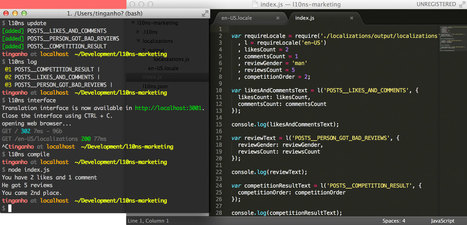Learn how to deploy a location aware EmberJS application to heroku. This presentation explains how to use ember-cli-deploy along with heroku redis and s3 to create an application that dynamically changes the internationalization translation based on what country you're visiting the site from. Also uses ember-cli-server-variables, ember-i18n, node-ember-cli-deploy-redis, cheeriojs, and ember-cli.
Research and publish the best content.
Get Started for FREE
Sign up with Facebook Sign up with X
I don't have a Facebook or a X account
Already have an account: Login

Keeping track of current JavaScript Frameworks that help design your clientside Business Logic Layers.
Curated by
Jan Hesse
 Your new post is loading... Your new post is loading...
 Your new post is loading... Your new post is loading...
No comment yet.
Sign up to comment
|
|
















